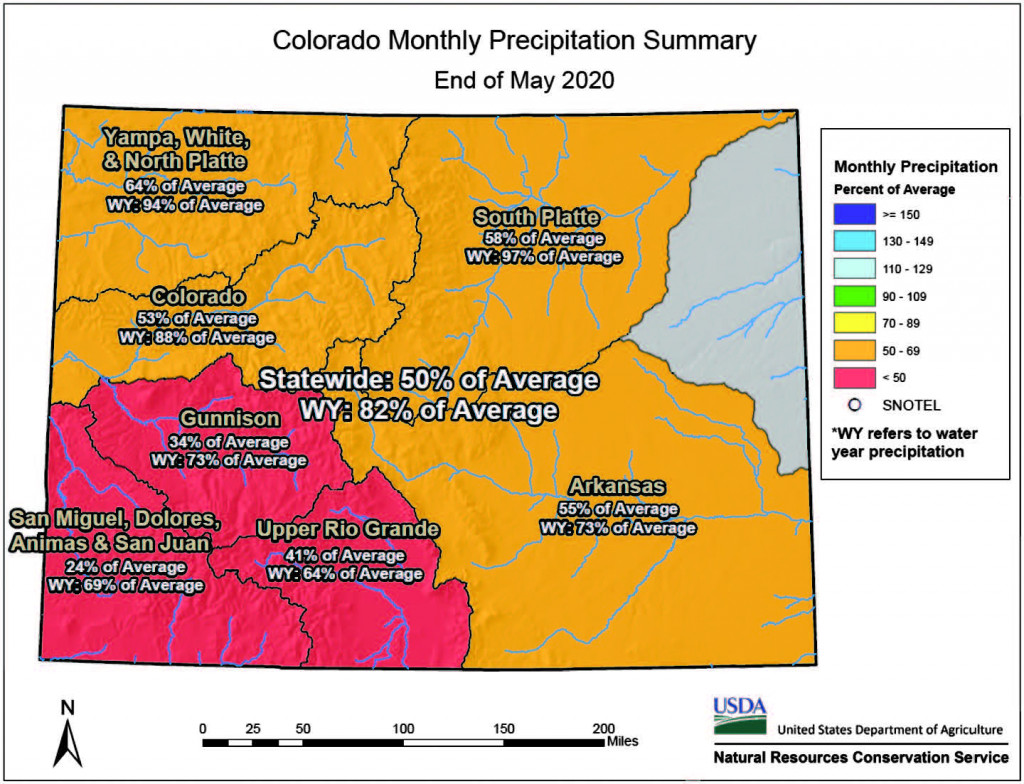Snowpack and stream flows dismal

SAN LUIS VALLEY — Critical fire weather conditions continue over the San Luis Valley. Avoid any activities that may spark a fire. The current Fire Danger rating is High. RGNF is under Stage 2 fire restrictions. High winds and extreme dry conditions make it far more difficult to control wildfires. If everyone uses a little extra caution when outside during these conditions, it goes a long way to reducing the human caused fires. The Stage 2 Order prohibits the following acts:
Igniting, building, maintaining, attending or using a fire, including charcoal grills and barbecues, coal and wood burning stoves, and sheepherder’s stoves.
Smoking, except within an enclosed vehicle, trailer or building.
In addition to well below normal precipitation, the National Resource and Conservation Service reports the Colorado mountains have also had warmer than normal temperatures. This combination has led to snowmelt rates that are much faster than normally observed.
In Southern Colorado, where the past winter snowpack reached near normal peak values, this led to snow melting out of SNOTEL snowpack metering sites several weeks earlier than normal. The current snowpack level for the Rio Grande Basin is at 0.00 percent of normal. In northern basins where snowpack was above normal, snowmelt still occurred early but closer to a normal time than in Southern Colorado. This early snowmelt in combination with lower than normal precipitation both have contributed to declines in streamflow forecasts over the last two months.
The lowest streamflow forecasts in the state are in the Rio Grande basin where they average a meager 41 percent of normal. The Arkansas basin spans the gap of north to south with much higher forecasts in the headwaters compared to the much drier southern tributaries.
While the average of current streamflow forecasts in all major basins of Colorado are far well below normal volumes, there are still stark differences between the northern and southern basins. The highest forecast values in the state exist in the North Platte, South Platte and Colorado basins. The average of forecast values in these basins range from 72 to 79 percent of normal volumes. The Gunnison and combined San Miguel, Dolores, Animas and San Juan basins both have average forecast values of 55 percent of normal.
Statewide reservoir storage is currently at 100 percent of average but varies considerably basin to basin. The most plentiful storage in the state is in the combined Yampa and White basins as well as the Colorado basin where there is 115 percent of average storage. On the low end, the Rio Grande basin only has 62 percent of average storage, which could pose water resource challenges considering the low streamflow forecasts as well. The water supply will have to be watched closely across Colorado.



